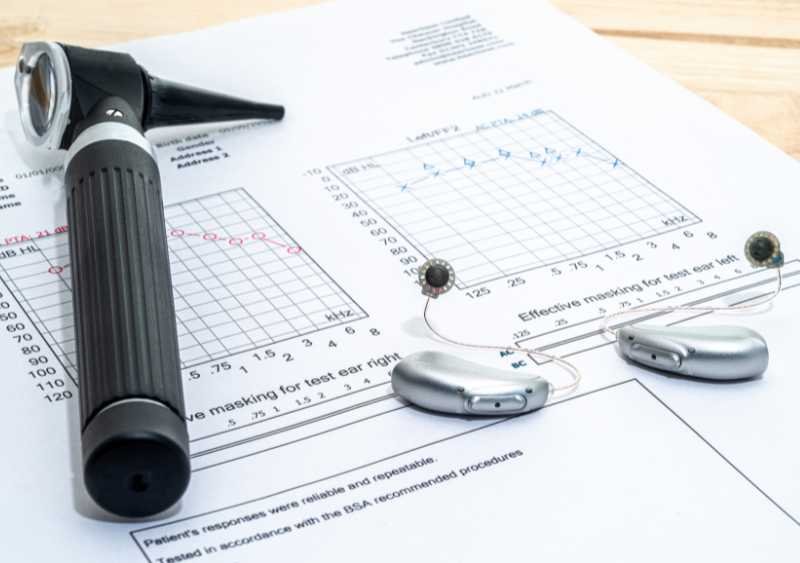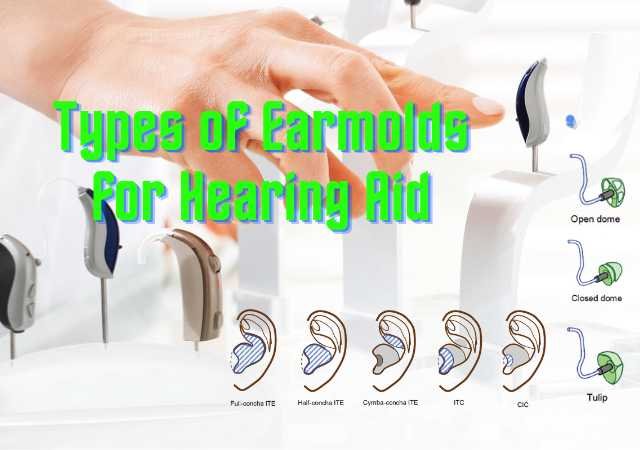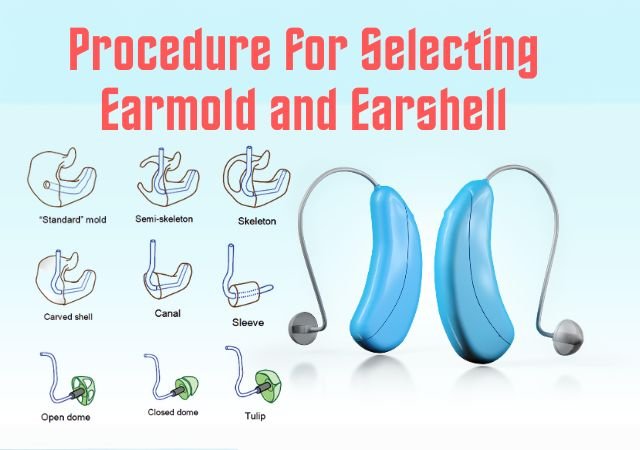
What Level of Hearing Loss Requires a Hearing Aid? Many people ask me when they really need to get a hearing aid, and the simple answer is that most people benefit from hearing aids when they have Mild to Moderately Severe Hearing Loss, which means losing about 25 to 70 decibels of hearing ability.
My name is Vikash Kumar, and I work as an Audiologist and Speech Language Pathologist here in India. I have spent years helping people understand their hearing problems and find the right solutions. I wrote this article because many people wait too long to seek help with their hearing, and I want to change that.
The information I share comes from real research studies, proven medical practices, and trusted health organisations, including government health departments that set standards for hearing care.
The goal is simple – to teach both regular people and other healthcare workers about when hearing aids can make a real difference in someone’s life. Whether you are starting to notice that you cannot hear conversations clearly or you work with patients who have hearing concerns, this information will help you make more informed decisions. Hearing loss affects millions of people, but many are unaware that seeking help early can prevent more severe problems later and significantly improve their daily lives.
Key Points & Interesting Insights

- 🦻 Five main hearing aid styles available – Behind-the-Ear (BTE) works for most hearing loss levels, while Receiver-in-Canal (RIC) offers natural sound, and smaller options like Completely-in-Canal (CIC) provide discretion for mild cases
- ⚡ Three receiver power levels – Medium power handles mild to moderate loss, power receivers tackle moderate to severe cases, and super power delivers maximum amplification for profound hearing loss
- 📊 Hearing loss severity determines options – Minimal to mild loss allows most styles, moderate loss opens up several choices, while severe to profound loss typically requires BTE or ITE with powerful receivers
- 🎵 Audiogram shape matters for fitting – Flat hearing loss patterns are generally compatible with any hearing aid style. However, when dealing with sloping loss, options such as Receiver-in-Canal (RIC) or In-the-Ear (ITE) devices tend to offer better outcomes. Meanwhile, more specialised configurations like cookie-bite or notch patterns require tailored strategies to address their unique auditory profiles effectively.
- 🔧 Consider lifestyle features – Bluetooth connectivity, rechargeable batteries, comfort preferences, and aesthetic appeal all play important roles in choosing the right device
- 💡 Professional guidance essential – Audiologists provide evaluations, trial periods, and ongoing support to ensure proper fitting and satisfaction
- 🛠️ Maintenance planning is important – Understanding upkeep requirements and warranty coverage helps with long-term hearing aid success
What Degree of Hearing Loss requires Hearing Aids?
People with minimal to mild hearing problems can use BTE, RIC, or CIC hearing aid types as per their needs regarding better hearing solutions. As per personal preferences, the receiver type choice may vary regarding these styles. People with moderate hearing loss can actually choose from BTE, RIC, ITC, or ITE hearing aids based on what feels comfortable and fits their daily life. These options definitely allow users to pick the style that works best for them. For moderate to severe hearing loss, doctors actually choose BTE or RIC hearing aids. They definitely pick power or super-power receivers based on how bad the hearing loss is. For very bad hearing loss, doctors actually recommend BTE or ITE hearing aids with super power receivers that definitely give enough sound boost for better hearing support.
| Degree of Hearing Loss | Number of People Affected Worldwide | Percentage of Hearing Loss | Percentage of Hearing Aid Users | Primary Sources |
|---|---|---|---|---|
| Mild | ~1,009,510,000 | 13.11% | 10-30% | GBD 2021, Haile et al. 2021, WHO 2024 |
| Moderate | ~392,500,000 | 5.10% | 30-52% | GBD 2021 , EuroTrak UK 2018 , Stevens et al. 2013 |
| Moderately Severe | ~108,330,000 | 1.41% | 50-65% | GBD 2021 , Stevens et al. 2013 , WHO classifications |
| Severe | ~21,980,000 | 0.29% | 70-71% | GBD 2021, EuroTrak UK 2018, Sonova 2019 |
| Profound | ~17,270,000 | 0.22% | 70% | GBD 2021 , Stevens et al. 2013 |
| Complete | ~20,410,000 | 0.27% | 65% | Huang et al. 2025 (9.9 million in 2021) |
Minimal to Mild Hearing Loss
- Typically addressed with BTE, RIC, or CIC styles.
- Receiver type may vary based on individual preferences.
- Moderate:
- Options include BTE, RIC, ITC, or ITE.
- Receiver choice depends on personal comfort and lifestyle.
Moderately Severe to Severe Hearing Loss
- Consider BTE or RIC styles.
- Choose a power or superpower receiver based on the severity.
Profound Hearing Loss
- BTE styles are often recommended.
- Ensure the chosen hearing aid has sufficient amplification capabilities.
What Type of Hearing Aid is needed for what Level of Hearing Loss?
Basically, hearing aids come in different types, but they serve the same purpose of helping people with various hearing problems. Behind-the-ear (BTE) devices surely work well for many types of hearing problems, and moreover, they come in different styles from small to regular sizes that suit both children and adults.
Receiver-in-Canal (RIC) or Receiver-in-Canal (RITE) hearing aids actually place the receiver inside your ear canal, which definitely gives you more natural sound. These aids work well for Mild to Severe Hearing Loss and are comfortable to wear daily.
Basically, Completely-in-Canal (CIC) devices fit inside the ear canal and work for Mild to Moderate Hearing Loss, but they are not the same as what severe cases need.
In-the-Canal (ITC) and In-the-Ear (ITE) hearing aids work well for Mild to Moderate Hearing Loss and offer a good balance between small size and useful features.
These aids provide further benefits while being less visible than BTE models, making the device itself more discreet for users. Further, as per individual needs, different options are available regarding hearing problems to give personal and working solutions for all types of hearing loss.
Behind-the-Ear (BTE)
- Suitable for a wide range of hearing loss.
- Offers various styles, from mini BTE to traditional BTE.
- Recommended for children and adults.
Receiver-in-Canal (RIC) or Receiver-in-the-Ear (RITE)
- Suitable for mild to severe hearing loss.
- Provides a more natural sound due to the receiver being in the ear canal.
- Discreet and comfortable.
Completely-in-Canal (CIC)
- Suitable for mild to moderate hearing loss.
- Fits completely in the ear canal, making it discreet.
- It may not be suitable for severe or profound hearing loss.
In-the-Canal (ITC) and In-the-Ear (ITE)
- Suitable for mild to moderate hearing loss.
- Larger size allows for additional features and controls.
- More visible than CIC but less so than BTE.
What type of Receiver is needed for what level of Hearing Loss?
Basically, receiver types are the same important factor that helps customise hearing aids for different people’s hearing needs.
The Medium Power Receiver is the same perfect option for people with mild to moderate hearing problems because it gives a good sound boost while staying small in size. As per user needs, it serves people who want a quiet but effective solution regarding their requirements.
We are seeing that people with moderate to severe hearing problems can only get proper help from the Power Receiver, which gives a stronger sound boost to handle different hearing difficulties.
The Super Power Receiver is surely made for people with very serious hearing problems, giving them the strongest sound boost. Moreover, it provides complete hearing support for those who need maximum help.
These receiver choices surely show a careful step-by-step approach, making sure users can find the exact amount of sound boost they need for their specific hearing problems. Moreover, this helps them hear better with comfort and good results.
Medium Power Receiver
- Suitable for mild to moderate hearing loss.
- Offers a balance between size and amplification.
Power Receiver
- Suitable for moderate to severe hearing loss.
- Provides more amplification than medium power.
Super Power Receiver
- Suitable for severe to profound hearing loss.
- Delivers maximum amplification.
Hearing Aids according to Audiogram Configurations
Audiogram patterns surely help in making hearing aid solutions that fit each person’s needs. Moreover, these configurations play a very important role in providing the right treatment. A Flat Audiogram actually needs the same amount of help across all sound levels, so it definitely works with many different hearing aid types. As per Sloping Hearing Loss, RIC or ITE hearing aids with proper receivers work better regarding higher frequency sounds that need more boost. Basically, when someone has low-frequency hearing loss, BTE or ITE hearing aids work the same way and are compatible for this condition.
For hearing loss that actually needs more help with low sounds, an Audiologist definitely recommend RIC or BTE hearing aids with the right receivers. A notch setup that actually needs boosting in certain frequencies can definitely be handled with RIC or ITE styles. People with mid-frequency hearing loss can actually benefit from BTE or ITE hearing aids that have the right receiver. These hearing aids will definitely help improve their hearing in the middle sound ranges. Moreover, basically, cookie-bite hearing loss needs mid-frequency amplification, so BTE, ITE, or RIC hearing aids are the same good options to consider. We are seeing that different hearing test results show why each person needs only specific hearing help made for their particular sound frequency problems.
Flat Audiogram
- Generally requires equal amplification across frequencies.
- Any hearing aid type may be suitable.
Sloping Audiogram
- More amplification is required for higher frequencies.
- RIC or ITE with an appropriate receiver may be beneficial.
Rising Audiogram
- Low-frequency hearing loss.
- BTE or ITE may be suitable.
Trough (Reverse-Sloping) Audiogram
- More amplification is needed in the lower frequencies.
- RIC or BTE with an appropriate receiver may be recommended.
Notch (High-Frequency) Audiogram
- Requires amplification in specific frequencies.
- RIC or ITE styles may be suitable.
Saucer (Mid-Frequency)
- Mid-frequency hearing loss.
- BTE or ITE with a suitable receiver may be chosen.
Cookie-Bite Audiogram
- Mid-frequency amplification is needed.
- BTE, ITE, or RIC styles may be considered.
Additional Considerations for Hearing Aids
- Features and Controls: Consider additional features like Bluetooth connectivity, rechargeable batteries, and customizable settings based on lifestyle.
- Comfort and Aesthetics: Personal preference plays a crucial role in user satisfaction. Consider the comfort and aesthetic appeal of the chosen hearing aid.
- Trial Period: Many audiologists offer trial periods. Take advantage of this to ensure the selected hearing aid meets your needs.
- Maintenance and Repairs: Understand the maintenance requirements and warranty coverage for the chosen hearing aid.
Note: Remember to consult with an audiologist or hearing healthcare professional to get a comprehensive evaluation and personalised recommendations based on your specific needs and preferences.
Frequently Asked Questions (FAQs)
The need for a hearing aid in children is determined by the severity of their hearing loss. Typically, if a child has a mild to severe hearing loss, a hearing aid may be recommended. It’s crucial to consult with an audiologist who can assess the child’s specific condition and provide personalised recommendations.
When choosing the right hearing aid, it is important to consider the degree of hearing loss. For minimal to mild hearing loss, options such as Behind-the-Ear (BTE), Receiver-in-Canal (RIC), or Completely-in-Canal (CIC) styles may be suitable. For moderate hearing loss, choices like BTE, RIC, In-the-Canal (ITC), or In-the-Ear (ITE) styles can be considered based on personal comfort.
Audiogram configurations, including flat, sloping, rising, trough, notch, saucer, and cookie-bite, play a crucial role in selecting the appropriate hearing aid. For a flat audiogram, any hearing aid type may be suitable. Sloping configurations may benefit from RIC or ITE styles.
Consideration of receiver types is key in customising hearing aids based on individual needs. Medium power receivers are suitable for mild to moderate hearing loss, offering a balance between size and amplification. For moderate to severe hearing loss, power receivers provide enhanced amplification, while super power receivers are specifically designed for severe to profound hearing loss, delivering maximum amplification.
Yes, additional considerations include features and controls (such as Bluetooth connectivity), comfort, aesthetics, trial periods (many audiologists offer trial periods for testing the hearing aid), and understanding maintenance requirements and warranty coverage.
Conclusion
Basically, choosing the right hearing aid means looking at your hearing loss type, how bad it is, your hearing test results, and what you personally prefer – it’s the same process for everyone, but the choice depends on these factors. As per individual needs, hearing aids come in different styles like Behind-the-Ear, Receiver-in-Canal, and Completely-in-Canal models. Regarding personalised solutions, these various options ensure every person can find a suitable hearing aid style. Different receiver types, like medium power, power, and super power, actually provide exact amplification levels for specific hearing problems. These types definitely help address particular hearing needs with precise sound control. The level of hearing loss, from mild to severe, surely determines which hearing aid type and receiver should be chosen. Moreover, this decision depends on how much hearing ability the person has lost.
Different hearing loss patterns, like flat, sloping, or notch shapes, actually need different hearing aid settings. Audiologists definitely must match the amplification to each person’s specific frequency needs. As per the decision-making process, other important points regarding features, comfort, looks, trial time, and maintenance make the choice better. Basically, consulting with an audiologist gives you the same comprehensive check-up and personalised advice for an effective hearing aid experience.
Note: It is essential to consult with an audiologist or hearing healthcare professional for a comprehensive evaluation and personalised recommendations based on specific needs and preferences.
References:
- Deafness and Hearing Loss – World Health Organisation (WHO)
- Introduction to Audiology – Frederick N.Martin (Book)
- Essentials of Audiology – Stanley A. Gelfand, PhD (Book)
You are reading about:
What Level of Hearing Loss requires a Hearing Aid?







0 Comments